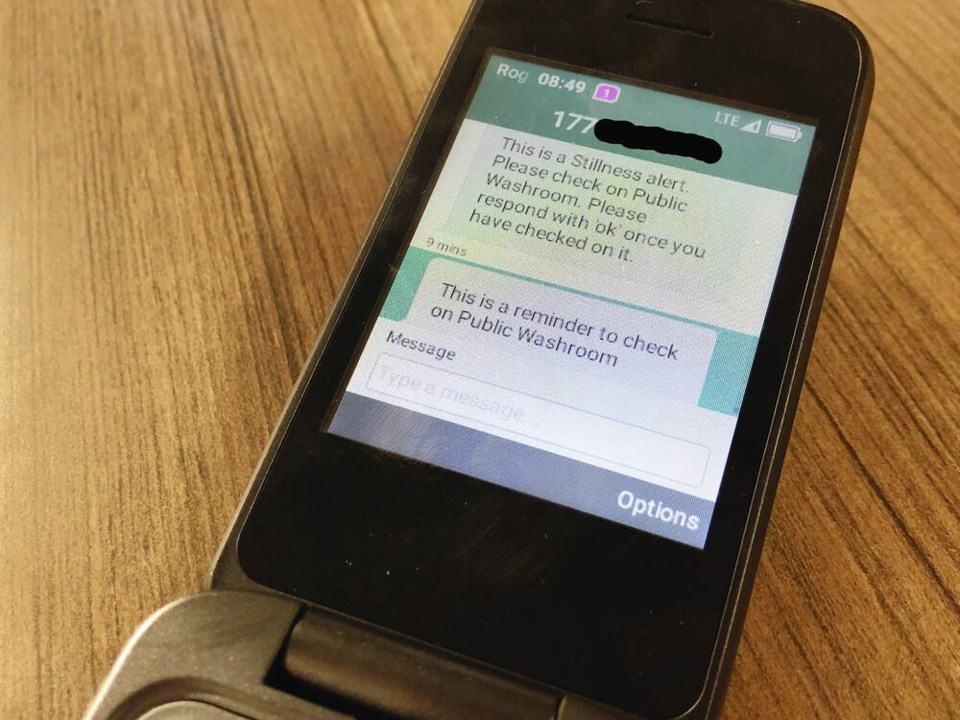Island Health says motion-detection sensors installed in bathrooms to alert health-care staff to possible drug overdoses have likely saved one life and could save more.
In October, the sensors were installed in Courtenay in bathrooms identified as high-risk spaces for drug poisonings — a mental-health and substance-use services site and the Comox Valley Nursing Centre.
The sensors monitor movement and how long a person has occupied the washroom, and each site sets time limits based on experience and needs.
If a client has been in the bathroom for 10 minutes or hasn’t moved for one minute, the sensor sends a text notification to designated responders, such as a clinician, site supervisor or administrative staff to follow up.
Island Health says the sensors alerted a clinician to an unresponsive person in a bathroom who could otherwise have died.
The program started with about 80 sensors, mainly in the Lower Mainland, in 2019 and more are planned there.
Six sensors have been installed in Courtenay, Nanaimo and Campbell River. Trial use of the sensors is now expanding to Nanaimo Regional General Hospital, where they will be in place for a few months to be evaluated.
In 2022, there were at least 2,272 illicit drug toxicity deaths in B.C., including 386 in the Island Health region. Most fatal overdoses occur in men using drugs alone.
The University of Victoria’s Canadian Institute for Substance Use Research says more than 50 overdoses happen in bathrooms in B.C. every month, based on 911 calls to B.C. Emergency Health Services. That number is likely an underestimation of the number of drug poisonings that actually occur in washrooms, it says.
Mental Health and Addictions Minister Jennifer Whiteside said shame and stigma of addictions continue to drive people to use alone, but given the increasingly toxic drug supply, using alone can be fatal.
The sensor project is one of the first trials to be launched under Island Health’s innovation program, which explores new approaches to how health care is delivered, according to Leah Hollins, chair of Island Health’s Board of Directors.
Island Health’s so-called Innovation Lab relies on input from staff, physicians and patients to generate and test potential solutions to be trialed across the Island.
The Comox Valley Healthcare Foundation is also helping to support the pilot project in Courtenay.
The project began in the fall of 2021 with Vancouver company Brave Co-Op as a partner.
“The sensor system gives that level of dignity that we want to provide to everyone who uses our services,” says Lesley Howie, director of Island Health’s Mental Health and Substance Use program for the North Island.
“It’s a very visible and concrete action that we as a service can provide. And it reassures staff that there’s a system in place. I am hopeful that this is a forerunner for something that will be much bigger.”
UVIC’s Canadian Institute for Substance Use Research has an online Safer Bathroom Toolkit at https://www.uvic.ca/research/centres/cisur/projects/active/projects/safer-bathrooms.php with checklists and ideas on ways to make bathrooms safer for people who use substances.



